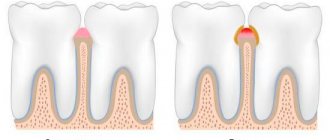Sources of influence
Arsenic is a naturally occurring element in the earth's crust and is widely distributed in the environment - in air, water and soil.
Its inorganic form is highly toxic. People are exposed to elevated concentrations of inorganic arsenic through contaminated drinking water, by using contaminated water for cooking and irrigating food crops, during industrial processes, and by eating contaminated foods and smoking tobacco.
Long-term exposure to arsenic in drinking water and food can lead to chronic arsenic poisoning. The most common consequences are skin lesions and skin cancer.
Drinking water and food
The greatest threat to human health is arsenic contained in groundwater. Inorganic arsenic occurs naturally in high concentrations in groundwater in a number of countries, including Argentina, Bangladesh, India, China, Mexico, the United States of America and Chile. Sources of exposure include drinking water, food crops irrigated with contaminated water, and food prepared with contaminated water.
Fish, shellfish, meat, poultry, dairy and grain products can also be dietary sources of arsenic, although the level of exposure to arsenic contained in such foods is generally much lower than the level of exposure to contaminated groundwater. In marine products, arsenic is mainly found in its less toxic organic form.
Industrial processes
Arsenic is used industrially as an alloying additive and in glass, dyes, textiles, paper, metal adhesives, wood preservatives, and ammunition production processes. Arsenic is also used in tanning processes and, to a limited extent, in the production of pesticides, feed additives and pharmaceuticals.
Tobacco
People who smoke tobacco may also be exposed to naturally occurring inorganic arsenic in tobacco because tobacco plants absorb a significant amount of arsenic naturally present in soil. In the past, levels of potential arsenic exposure were much higher because tobacco plants were commonly treated with an insecticide containing lead arsenate.
Arsenic in dentistry - is it dangerous?
Not so long ago, arsenic paste was used to successfully kill the dental nerve by placing it in the cavity of an exposed diseased tooth. It was assumed that over the next 2 days the poison would reduce sensitivity to zero, the nerve would be removed, and the tooth would be healed.
It would seem that everything is very simple. But there are some nuances here: you can carry arsenic in your mouth for no longer than 2 days. After this time, a visit to the dentist must be made again to remove the paste. Because of this, the question often arises: is it possible to get poisoned by carrying arsenic paste in your mouth?
Oddly enough, many people, afraid to feel pain again, walk with arsenic in their mouth for more days than they should, in order to be sure to “finish off” the nerve. The result here can be one: the poison begins to have a destructive effect on the tooth and soft tissues, which leads to inflammation and rapid destruction of the tooth itself.
Contrary to the existing myth that a filling with arsenic can poison the body, I would like to say that this is not at all the dose of poison that could really lead to intoxication. With arsenic, dental treatment will not lead to poisoning, even if:
Read also: Carbon dioxide poisoning in humans
- a dental filling containing arsenic fell out and was accidentally swallowed,
- the patient is a child,
- There was an overexposure of the arsenic filling in the mouth.
The minimum amount of arsenic in the composition of the medicinal paste is unable to poison the entire body. But since it can harm the tooth, this substance is rarely used in dentistry. Basically, unless the patient is allergic to modern local anesthetics.
And although arsenic poisoning during dental treatment is impossible, dentists themselves increasingly refuse to use the outdated method of killing the nerve in order to preserve the tooth and its soft tissues. This has been replaced by strong anesthetics that can reduce discomfort to zero, which allows you to painlessly treat the tooth and preserve it for a long time.
Health implications
Inorganic arsenic has been shown to be a carcinogen and is a major contaminant of drinking water globally. Arsenic also occurs in organic form. Inorganic arsenic compounds (like those found in water) are highly toxic, while organic arsenic compounds (like those found in seafood) are less harmful to health.
Acute consequences
Immediate symptoms of acute arsenic poisoning include vomiting, abdominal pain and diarrhea. They are followed by numbness and tingling in the limbs, muscle cramps and, in the most severe cases, death.
Long term impact
The first symptoms of long-term exposure to high levels of inorganic arsenic (eg, through drinking water or food) usually appear on the skin and include pigmentation changes, skin lesions, and roughening of the skin on the palms and soles (hyperkeratosis). These symptoms appear after exposure for at least five years and may be a warning sign of skin cancer.
In addition to skin cancer, long-term exposure to arsenic can also cause bladder and lung cancers. The International Agency for Research on Cancer (IARC) classifies arsenic and arsenic compounds as human carcinogens and also lists arsenic in drinking water as a human carcinogen.
Other negative health effects that may be associated with long-term inorganic arsenic use include effects on development, diabetes, lung disease, and cardiovascular disease. Arsenic-induced myocardial infarction, in particular, may be a significant cause of excess mortality. In China (Taiwan Province), arsenic exposure has been linked to “black leg disease,” which is a severe blood vessel disease that leads to gangrene. However, this disease is not observed in other parts of the world, so it is possible that malnutrition contributes to the development of this disease. Arsenic is also associated with adverse pregnancy outcomes and infant mortality, as well as health effects in children (1), and exposure in utero and early life is associated with increased mortality among youth due to various types of cancer, lung disease, heart attack, and kidney disease. insufficiency (2). Numerous studies have shown the negative effects of arsenic exposure on mental development, IQ, and memory (3).
A few words about poisons
According to scientists, any substance that enters the body can cause poisoning - after all, much depends not only on the concentration of the poison, but also on its quantity. Substances that are common and necessary for normal functioning of the body can become toxic in excessive quantities.
Under certain circumstances, even ordinary water can become dangerous: if you drink about 7 liters per day, you can get acute poisoning and even die from intoxication. Symptoms of water poisoning are associated with disruption of water and electrolyte metabolism in the body: swelling, cramps, vomiting, interruptions in heart function, diarrhea.
Toxic substances can enter the human body in all possible ways: through the mouth, skin, respiratory organs, by injection into the rectum, vein or ear canal. The severity of poisoning, symptoms and treatment, emergency measures to remove poison from the body depend on the type and amount of the toxic substance, and, of course, on the routes of its penetration.
The first symptoms of poisoning may appear immediately after the poison enters the body or within several hours or even days. First of all, the brain, liver, kidneys, and intestines are affected by toxic substances. These organs “give signals” - symptoms of poisoning that cannot be ignored!
Scale of the problem
Arsenic contamination of groundwater is widespread, and a number of areas have significant levels of arsenic contamination in drinking water. Today, at least 140 million people in 50 countries are known to drink water with arsenic concentrations above the WHO guideline level of 10 µg/liter (4).
After in the 1990s. In Bangladesh, widespread arsenic was found in well water, and the issue of arsenic exposure in that country has received a lot of attention. Since then, significant progress has been made, and the number of people exposed to arsenic levels above the Bangladesh Drinking Water Quality Standard has decreased by approximately 40%. Despite these efforts, it is estimated that in 2012, approximately 19 million and 39 million people in Bangladesh were exposed to arsenic levels above the national standard of 50 μg/liter and the WHO guideline of 10 μg/liter, respectively (5 ). In areas of Bangladesh where the problem is particularly acute, 21.4% of all deaths were caused by arsenic concentrations in drinking water greater than 10 µg/liter (6). A similar dose-response relationship was observed in other parts of Bangladesh: these results were combined with those of a national survey, and the combined analysis yielded an annual arsenic-related mortality rate of 43,000 (7). The US National Research Council has noted that lifetime consumption of drinking water containing 50 µg/liter arsenic (8) may be responsible for up to 1 in 100 additional cancer deaths.
Symptoms and signs caused by long-term exposure to elevated concentrations of inorganic arsenic vary between individuals, populations, and geographic areas. Therefore, there is no general definition of the disease caused by arsenic. This makes it difficult to estimate the burden of disease associated with arsenic.
There is also no method for distinguishing between cancers caused by arsenic and cancers caused by other factors. As a result, there is no reliable estimate of the extent of the problem worldwide.
In 2010, the Joint FAO/WHO Expert Committee on Food Additives (JECFA) re-evaluated the health effects of arsenic exposure in the light of new evidence. JECFA concluded that for selected areas of the world where levels of inorganic arsenic in drinking water exceed 50-100 µg/litre, there is some evidence of adverse effects. For other areas where elevated levels of arsenic in water (10-50 µg/litre) are observed, the committee noted that while adverse effects may occur, the prevalence is low and would be difficult to detect in epidemiological studies.
How to help the victim
Although mild poisoning does not require hospital treatment, only a doctor can determine the severity of the problem. Therefore, first of all, you need to call an ambulance, and during its journey, independently help the victim:
- provide fresh air,
- give 1 glass or 1 liter of acidified water to drink (with 1 liter of vinegar or 3 g of citric acid) to cleanse the stomach,
- if there is hydrogen sulfide water in the house, give it a solution (100 ml) to neutralize the poison and transform it into a safe substance - arsenic sulfide,
- give sorbents (any except activated carbon, which is useless in this situation),
- in case of dehydration, unsolder the victim little by little, but often,
- If a toxic substance gets on your skin, wash it off with soapy water.
It is unlikely that in any home there will be drugs for every occasion, much less antidotes against arsenic. Therefore, all other actions will be carried out by doctors.
Prevention and control
The first action for affected regions is to prevent further exposure to arsenic by ensuring safe water supplies for drinking, cooking, and irrigating food crops. There are a number of ways to reduce arsenic levels in drinking water.
- Replacing sources with high concentrations of arsenic, such as groundwater, with microbiologically safe sources with low concentrations of arsenic, such as rainwater and treated surface water. Water with a low concentration of arsenic can be used for drinking, cooking and irrigation, while water with a high concentration of arsenic can be used for other purposes, such as washing and washing clothes.
- Distinguishing between sources with high and low arsenic concentrations. For example, you can test water for arsenic levels and paint wells or hand pumps with different colors. When combined with effective health education, this can be an effective and inexpensive intervention to quickly reduce arsenic exposure.
- Mixing water with low and high concentrations of arsenic to achieve acceptable arsenic levels.
- Install arsenic removal systems—centralized or individual—and ensure proper disposal of removed arsenic. Technologies for arsenic removal include: oxidation, coagulation-precipitation, absorption, ion exchange and membrane technologies. There are a growing number of effective and low-cost options for eliminating arsenic from small and domestic water supplies, although there is still limited data on the extent to which such systems are used effectively over sustained periods of time.
Long-term interventions are needed to reduce workplace exposure to arsenic during manufacturing processes.
Health education and community involvement are key to ensuring successful interventions. It is important that community members understand the dangers of exposure to high concentrations of arsenic and know the sources of arsenic exposure, including arsenic contamination of food crops (eg, rice) from irrigation water and arsenic contamination of food from cooking water.
Monitoring of high-risk groups should also be conducted to detect early signs of arsenic poisoning, usually skin problems.
Alcohol poisoning
Symptoms most often occur in the morning. Many consider them a kind of “retribution” for a stormy evening. This condition is more often called a hangover rather than alcohol poisoning.
Symptoms depend on the concentration of ethyl alcohol in the blood. At the beginning of intoxication, this is euphoria and talkativeness, with an increase in alcohol concentration - impaired speech and coordination of movements. The liver begins the process of recycling alcohol into simpler substances, aldehyde, water, carbon dioxide. It is acetaldehyde that is “to blame” for morning ailments: headache, thirst, nausea, dry mouth, dizziness.
Be careful!
In order for alcohol poisoning to occur, an adult needs on average about 200 ml of 40% ethanol; alcohol poisoning in a child occurs when drinking 30 ml of 40% ethanol (vodka).
Carbon monoxide poisoning
Unfortunately, none of us is immune from carbon monoxide poisoning, because this substance is formed during combustion processes. Gas poisoning (CO) sometimes occurs in country houses due to faulty stove heating, in garages with poor ventilation, in fires and in hazardous industries.
Symptoms of carbon monoxide poisoning
The patient experiences drowsiness, headache, redness of the skin, chest pain, lacrimation, dry cough, and hallucinations. In severe cases, gas poisoning can cause fainting or complete loss of consciousness.
It is important to recognize these symptoms in time and start treatment at home in a timely manner! It is necessary to take the poisoned victim out of the room, provide access to fresh air and call an ambulance. To reduce the toxic effect of gas on the victim’s body, Enterosgel sorbent can be used.
Symptoms of mercury poisoning
Intoxication of the body with mercury compounds can be acute and chronic. Mercury vapor poisoning is possible in hazardous industries. Poisoning occurs when a fluorescent lamp is damaged, or mercury poisoning from a thermometer.
Symptoms that occur when inhaling mercury vapor include: drooling, dry cough, vomiting, headache and abdominal pain, and frequent urination. Poisoning in children often occurs due to parental negligence: remember, you cannot leave the first aid kit in a place accessible to the baby - this risks not only a broken thermometer, but also drug poisoning!
Chronic mercury intoxication causes depression, insomnia and other disorders of the central nervous system, skin rashes, sweating, and hair loss.
Poisoning in animals
Don’t think that only humans can get poisoned. “Our smaller brothers” often suffer from poisoning. The reason for this is the well-known hunting instinct, when a dog or cat conducts a “study” of new substances, testing them to their teeth.
- Symptoms of poisoning in cats and dogs arise from intoxication with various chemicals, poor quality food, medications, and insect bites;
- Symptoms of poisoning in dogs and other pets: lethargy, drooling, refusal to eat, vomiting, loss of coordination, diarrhea, dilated pupils, convulsions.
If signs of poisoning appear, contact your veterinarian!
Chlorine poisoning. Symptoms
Chlorine compounds are used in everyday life to clean surfaces, disinfect pool water and bleach laundry. Since chlorine has become firmly established in our daily lives, it is important to know what symptoms of poisoning with chlorine-containing substances may bother victims.
Dry cough, choking, sore throat, drooling, watery eyes, vomiting - these are the signs of chlorine poisoning.
Depending on the severity of intoxication in the body, chlorine poisoning can be mild, moderate and severe. Poisoning in children of any degree can only be treated in a hospital!
After carrying out the first emergency measures (gastric lavage and taking Enterosgel sorbent), the victim is hospitalized for medical care.









